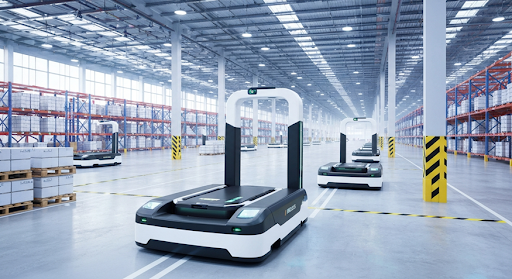What is a Historian in Industrial Automation?
An off-the-cuff answer is someone that records history. Control system historians are a tool you use to collect data from your production process. However, this technology cannot work alone and is at the mercy of the client's needs. It could be a historian specializing in many different design types and here are some ways these style systems can be distinguished:
BY PLATFORM - Historian Applications can be run on many different architectures, each of which have their own set of advantages and disadvantages.
BY DATA COLLECTION WITH DESCRIPTIVE TEXT- Historians use a variety of methods to collect data, including surveys and other methods. Some use USB drives. Others walk around and grab the discs or cylinders occasionally, off-loading the data. If you’re using a microSD card, then you can also buy cheap storage up to 2 Terabytes. In some cases, people collect the microSD cards but for other applications the data just goes onto a server over Ethernet.
The way in which these tools function varies, with the most basic ones just collecting data and storing it, while others can provide data in a format that is easier to transfer, edit and manipulate. Users typically want to access data in order to manipulate it and do more processing with it, which can be done by dragging and dropping the data onto a spreadsheet for example. They may also want to share the data with other users by exporting it as an Excel file, or sending an email containing the information in an attached spreadsheet file. It's very important for them to know what the features and functions of their chosen software are, so that they can get the most out of it. Many times, data just needs to be downloaded onto a long-term storage device where it can remain for months or years.
BY CONNECTIVITY – Historically, most historians did not have the capability to connect to a computer using Ethernet. They also often had less connectivity and storage space which made it difficult for research to be done, but thanks to the creation of modern-day computers, this has become a much easier task. But today, as IEEE 802.3 is the standard that connects computers and networks, it has become much easier to do research on a number of different topics. Sending a downloadable ascii file requires that the recipient is aware of the incoming file and knows what format it is in. It can be downloaded from any device with an internet connection and viewed on a computer program such as Notepad. There are many ways which act as a guide for the data that is stored on-disk. These methods can be used to keep the file system organized and efficiently use the hard drive space. Details below:
- A JSON file for instance is a structured ASCII file with self-identified data in the flat text. It has become very popular in IT to communicate using JSON data. Java Script can consume raw JSON data and move it into its programming memory.
- XML files are a type of ASCII file that is more detailed, so it's easier to identify which items are what in the file. The successor to XML was JSON, and they have the same self-identification of each data item.
- This input text describes a CSV file as a comma-delimited text file where the values that are displayed are strings and separated by commas. The last field is terminated by CR (carriage return). The first line of a CSV file usually contains data about each line of data (the header row).
When it comes to the transmission of files from one location to another, there are various methods and frequency considerations that need to be taken into account. A common way to transmit files through the internet is through the use of an FTP server. This can be accessed through a web browser and can be used to send or receive files from a remote location. Uploading a file on a regular basis by using an FTP uploader is one way of ensuring that you are always up-to-date with your files and that they are the most recent version. Uploading the same file every hour, for example, will ensure that you are always at the latest point in time. When sending data for collaboration, it is often necessary to use the same protocol as your collaborator. This can be accomplished by selecting Protocols from the Settings menu. For example, if one historiographer sends a file to another historian who does not work with the OPC UA (a protocol that supports sending files in their entirety) then they might send chunks as any one of an assortment of protocols. Historians need to be flexible and have a wide range of skills so they are prepared to handle all sorts of different applications.
The answer to what a control system historian is can be different depending on who you ask. If a human resource specialist asks, they would most likely say that it is someone who manages the human resources for a company. However, if you asked an engineer, they would say it is someone who studies and analyzes the mechanical systems of machines or devices. It is possible that the person who wrote this about control systems is an expert in the field, or a data collector.



